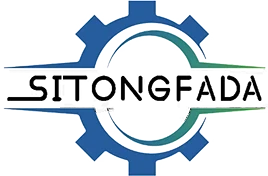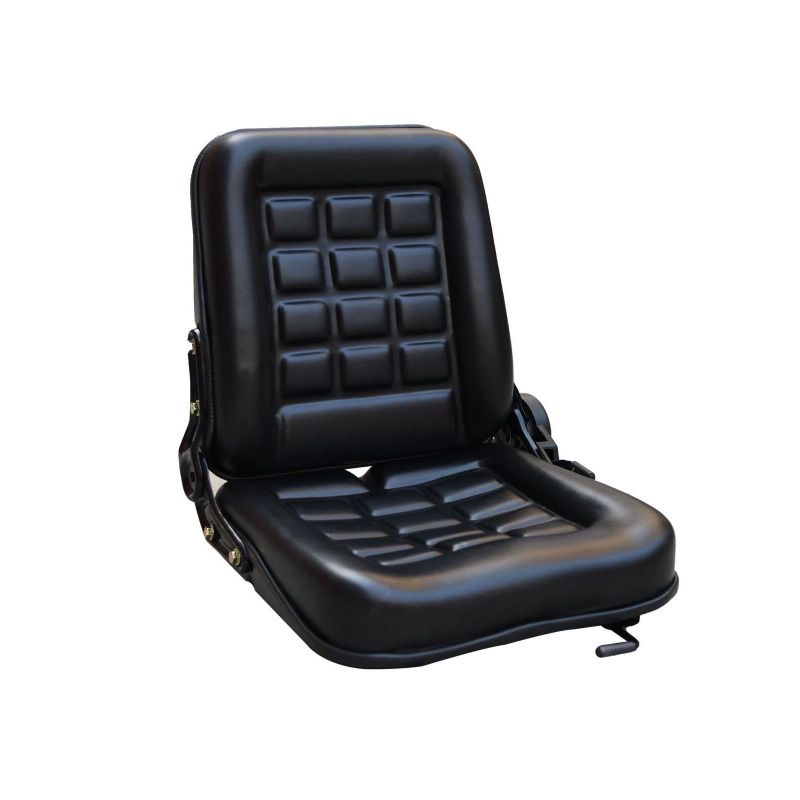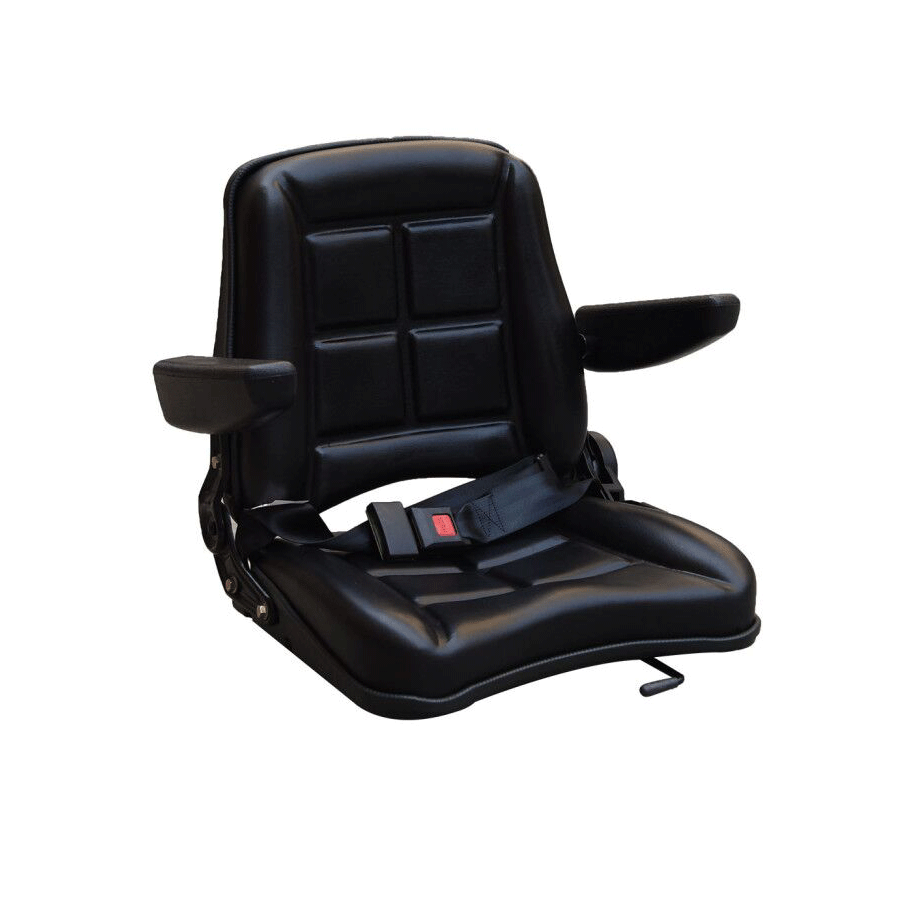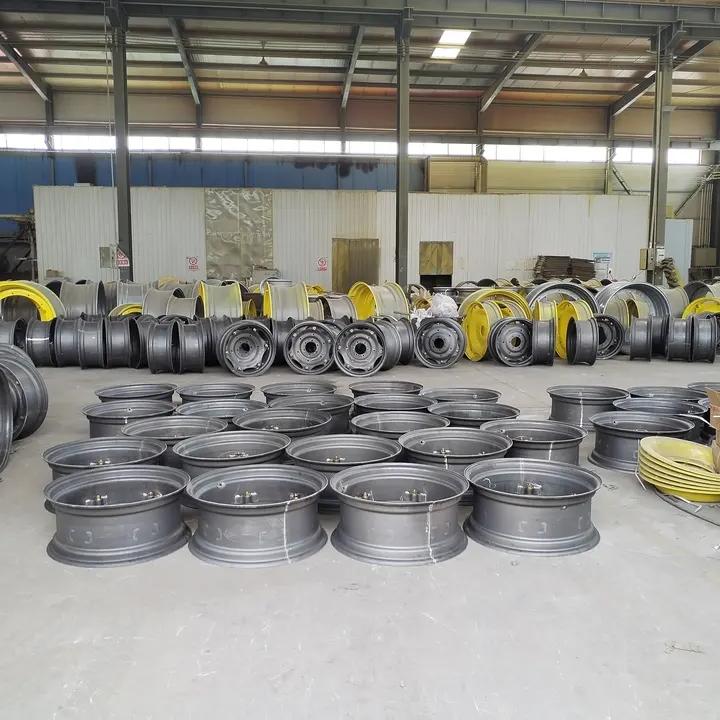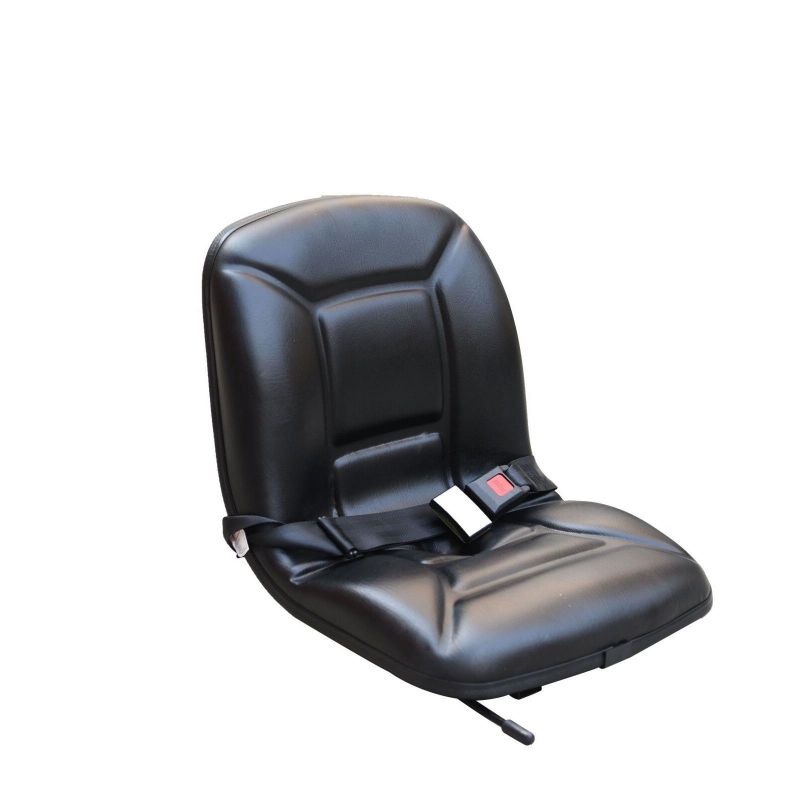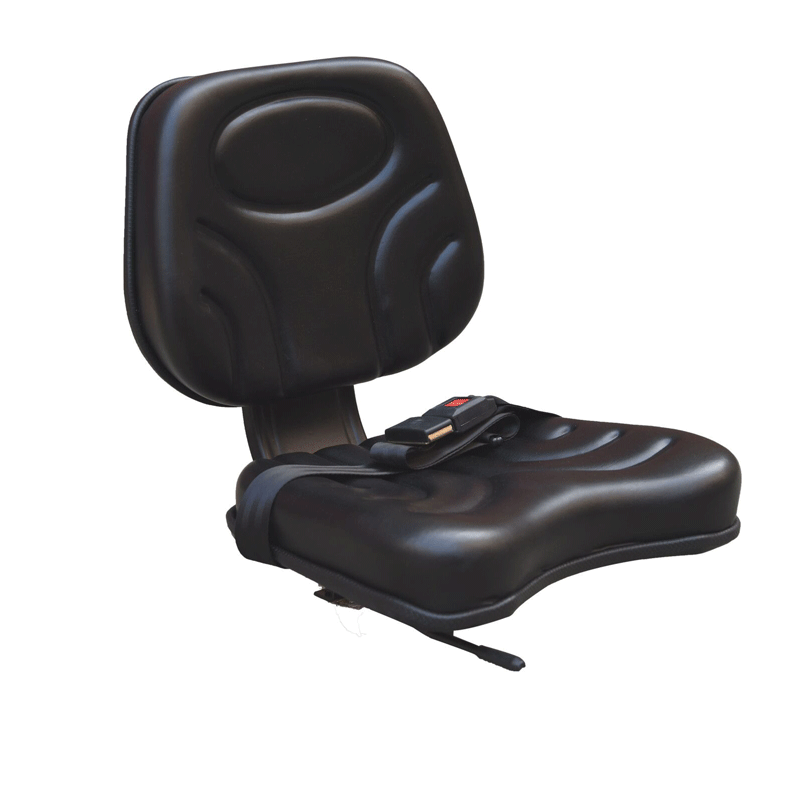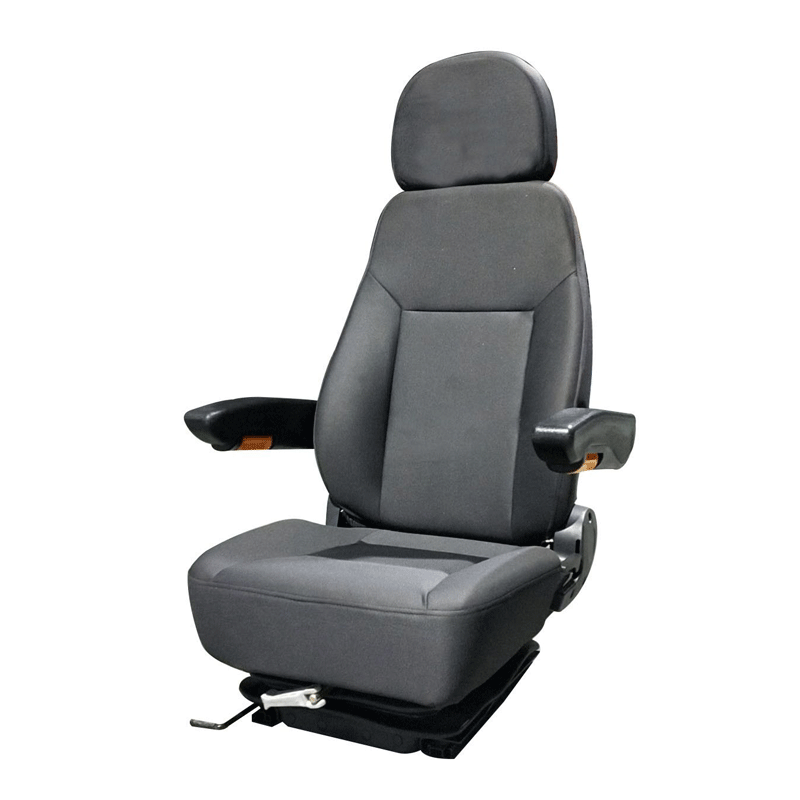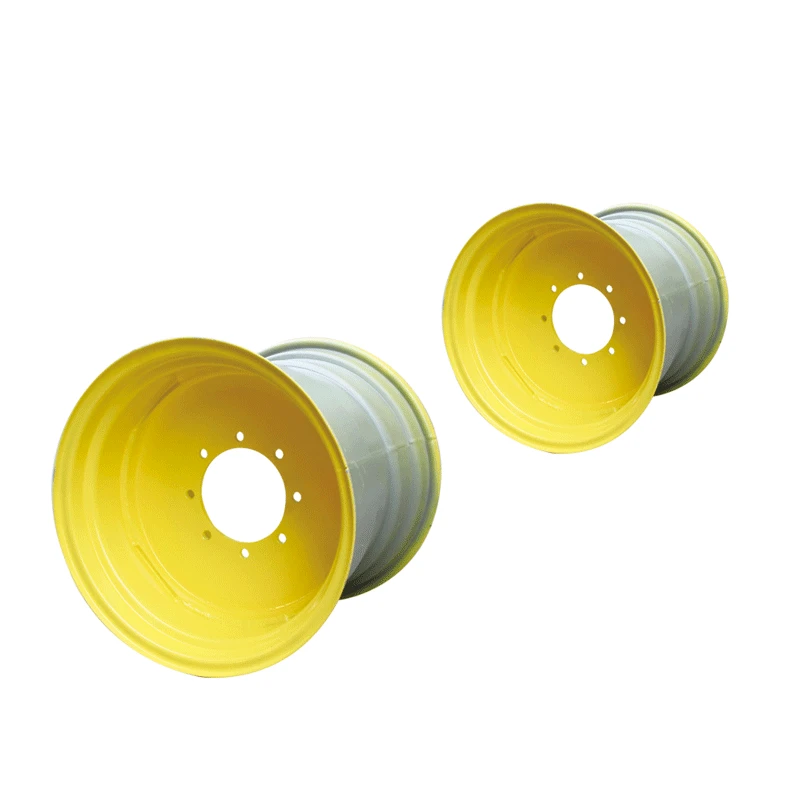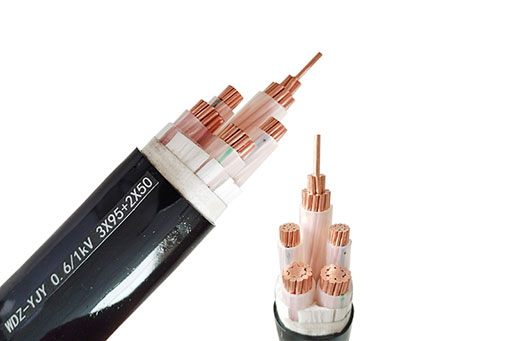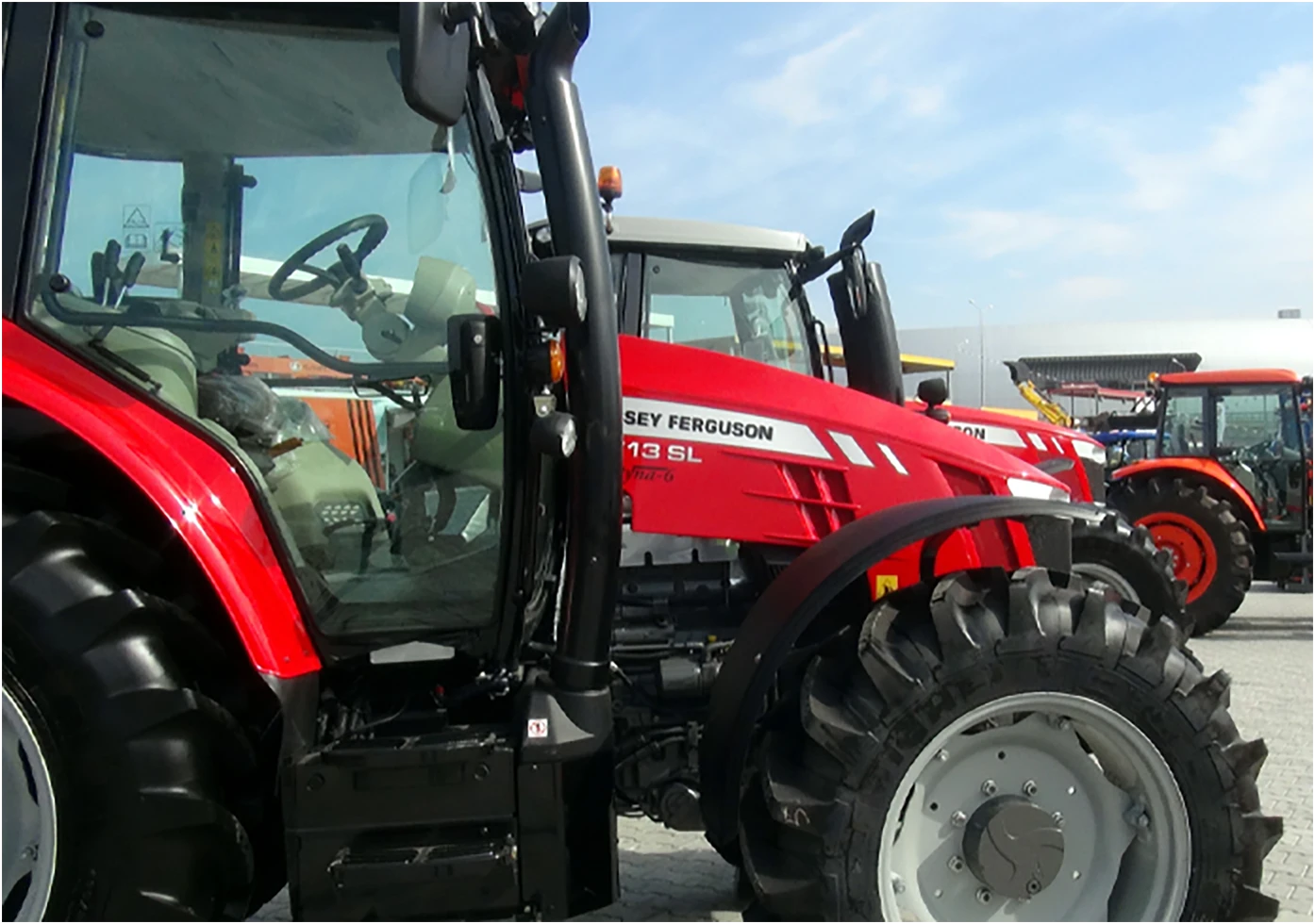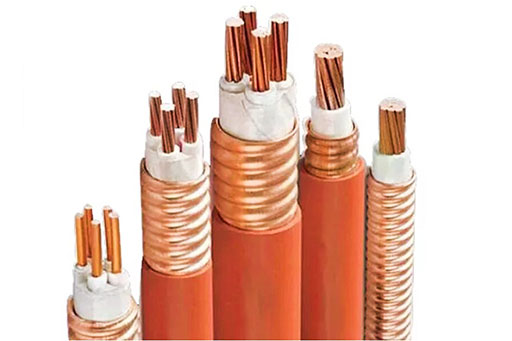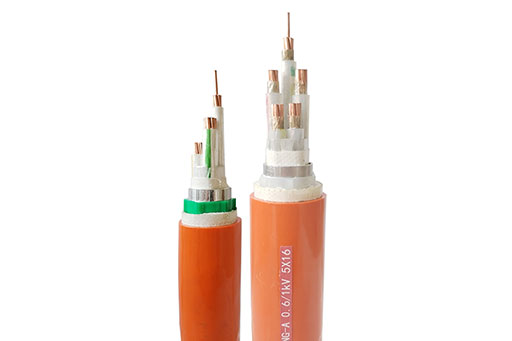The Critical Role of Advanced Seat Solutions in Modern Groundscare Equipment
In the demanding world of commercial landscaping, agriculture, and groundscare, the efficiency and well-being of equipment operators are paramount. A frequently overlooked yet absolutely vital component directly influencing these factors is the operator's seat. As machinery operates for extended periods, often across uneven terrain, the design and performance of the seat significantly impact operator comfort, safety, and ultimately, productivity. The modern focus on ergonomics, vibration reduction, and durability has elevated the importance of high-quality lawn mower seat replacement. This isn't merely about replacing a worn cushion; it's an upgrade to a critical interface that can transform operator experience and operational efficiency. Premium replacement seats, such as the FD-821-2 Seat, are engineered with sophisticated suspension systems, resilient materials, and ergonomic contours to mitigate the physical stresses associated with prolonged operation. This proactive approach to equipment maintenance and enhancement reflects a strategic understanding that operator comfort translates directly into reduced fatigue, fewer errors, and increased output over long shifts. Beyond the immediate operational benefits, investing in superior seating solutions also contributes to the longevity of the equipment itself by optimizing the operator's control and reducing jarring impacts that can affect machine components. For B2B decision-makers in fleet management, procurement, or maintenance, understanding the technical nuances and long-term advantages of advanced seating solutions is essential for maximizing their investment in groundscare machinery. The market for these specialized components is driven by a confluence of factors, including the aging fleet of existing equipment, heightened safety regulations, and a growing awareness among operators and employers regarding occupational health and safety. Furthermore, the integration of advanced electronics and sophisticated controls into modern machinery necessitates a stable, comfortable, and responsive operator platform, making the seat an integral part of the overall human-machine interface. This comprehensive article delves deep into the specific requirements, technical specifications, manufacturing precision, and strategic benefits associated with state-of-the-art replacement seats for a wide array of groundscare and utility vehicles, providing a robust resource for informed decision-making in this critical area of industrial maintenance and enhancement. We will explore the journey from raw materials to a finished product, detailing the intricate processes and stringent quality controls that define a superior seating solution, ensuring that every aspect, from material composition to ergonomic design, meets the highest industry benchmarks for performance and reliability.
Industry Trends and Technological Advancements in Operator Seating
The industry landscape for operator seating is evolving rapidly, driven by a convergence of technological innovation, stricter ergonomic standards, and a burgeoning demand for enhanced operator comfort and safety. Current trends highlight a shift towards more sophisticated suspension systems, integration of smart technologies, and the use of sustainable, high-performance materials in lawn mower seat replacement. Pneumatic and hydraulic suspension systems are increasingly replacing traditional spring-mechanical designs, offering superior vibration dampening and adjustability, crucial for prolonged operation on diverse terrains. These advanced systems can absorb up to 90% of harmful vibrations, significantly reducing operator fatigue and the risk of musculoskeletal disorders, which are common concerns in professions involving heavy machinery. The rise of automation and electrification in groundscare equipment is also influencing seat design, with a greater emphasis on integrated controls, heating/cooling elements for all-weather comfort, and sensor technology to monitor operator presence and posture. For instance, the demand for a high back tractor seat is escalating as it provides enhanced lumbar and upper back support, vital for operators spending long hours in a fixed position, thereby directly contributing to better posture and reduced long-term health issues. Similarly, the specialized requirements of a compact tractor seat, balancing robust support with spatial efficiency, are driving innovations in material science and design methodologies to ensure maximum comfort within confined operating environments. Furthermore, the increasing adoption of telematics and data analytics in fleet management is prompting manufacturers to explore seats with integrated sensors that can monitor operator vital signs or seating patterns, providing valuable data for safety analysis and performance optimization. Materials science plays a pivotal role, with advancements in high-density, memory-foam composites offering superior cushioning and shape retention, while durable, UV-resistant, and water-repellent vinyl or fabric covers ensure longevity and ease of maintenance. Environmental considerations are also gaining traction, leading to the development of recyclable components and eco-friendly manufacturing processes. Regulatory bodies globally are pushing for improved occupational health and safety standards, directly impacting seat design to ensure compliance with vibration exposure limits and ergonomic guidelines. This legislative push, coupled with an increasing awareness of the financial implications of operator downtime and health claims, is compelling businesses to invest in premium seating solutions. The market is also witnessing consolidation among manufacturers and a growing emphasis on modular designs, allowing for easier customization and replacement of individual seat components rather than the entire unit. This modularity not only offers cost savings but also reduces waste. The future of operator seating is undoubtedly intelligent, comfortable, and highly resilient, reflecting a holistic approach to enhancing both human performance and equipment longevity in the demanding operational environments of today's groundscare and utility sectors. Companies that prioritize these cutting-edge seating solutions are not just investing in comfort; they are strategically enhancing their operational efficiency, reducing health-related liabilities, and future-proofing their fleet against evolving industry demands.
Key Technical Parameters and Specifications for Optimal Performance
Selecting the appropriate lawn mower seat replacement hinges on a precise understanding of critical technical parameters that dictate its performance, durability, and ergonomic effectiveness. For a product like the FD-821-2 Seat, these specifications are meticulously engineered to meet the rigorous demands of commercial and heavy-duty applications. Key parameters include the suspension system type, which can range from mechanical spring suspensions to advanced air or hydraulic dampening systems, directly impacting vibration isolation. A high-quality suspension, measured by its static deflection and dynamic absorption capabilities, is paramount for operator health and comfort over prolonged periods. Seat dimensions, encompassing width, depth, and backrest height, must align with operator anthropometrics and machine cabin constraints. A high back tractor seat, for example, offers superior spinal support, while a compact tractor seat is designed to fit smaller machine footprints without compromising essential ergonomic features. Material composition is another crucial factor: the frame typically utilizes robust steel for structural integrity, often treated with electro-coating or powder coating for corrosion resistance. Cushioning involves high-density, cold-cure molded foams that maintain their shape and support over extensive use, covered by heavy-duty, UV-stabilized vinyl or fabric that resists tears, punctures, and environmental degradation (e.g., UV radiation, moisture, chemicals). Adjustable features are vital for customization to individual operator preferences and body types, including fore/aft slide adjustments (typically 6-8 inches), weight adjustments (to tune suspension for different operator weights, ranging from 110 lbs to 280 lbs+), backrest recline, lumbar support (mechanical or air-supported), and armrest adjustments (height, angle, fold-up). Safety features, such as integrated seat belt retractors (2-point or 3-point), operator presence switches (OPS), and optional seat heaters or cooling systems, further enhance usability and compliance. The weight capacity rating, often exceeding 250 lbs, ensures robust performance for a diverse range of operators. Furthermore, mounting patterns and bolt configurations must match the specific equipment for seamless integration. The FD-821-2 Seat is engineered with these considerations, offering a comprehensive solution that combines robust construction with ergonomic precision. Understanding these parameters allows B2B buyers to make informed decisions that optimize fleet performance and operator well-being, translating into long-term operational cost savings and increased productivity. Each technical specification plays a direct role in the seat's ability to withstand harsh operating environments, provide consistent support, and deliver a superior user experience, directly contributing to the overall return on investment for the equipment. Below is a detailed table outlining typical parameters found in high-quality lawn mower seats, including those embodied by products like the FD-821-2 Seat:
| Parameter | Description | Typical Range / Value | Relevance for FD-821-2 |
|---|---|---|---|
| Suspension Type | Mechanism for absorbing shocks and vibrations. | Mechanical, Air, Hydraulic | Often Mechanical/Spring with advanced dampening for robust applications. |
| Vibration Reduction | Percentage of vibration absorbed by the seat. | Up to 80-90% (e.g., ISO 7096 compliant) | High reduction to minimize operator fatigue and health risks. |
| Weight Adjustment | Ability to tune suspension for operator weight. | 110 - 280 lbs (50 - 127 kg) | Essential for universal application and optimal comfort. |
| Fore/Aft Adjustment | Horizontal sliding range for legroom. | 6 - 8 inches (150 - 200 mm) | Crucial for accommodating diverse operator heights. |
| Backrest Recline | Adjustable angle of the backrest. | Up to 15-30 degrees | Enhances ergonomic support and reduces back strain. |
| Seat Material | Covering material for durability and comfort. | Heavy-duty Vinyl, Fabric, PVC | Durable, UV/weather-resistant vinyl for outdoor use. |
| Frame Construction | Material and treatment of the seat frame. | Heavy-gauge Steel, Powder Coated/E-coated | Robust steel frame for structural integrity and longevity. |
| Mounting Bolt Pattern | Standardized hole patterns for installation. | Universal or specific OEMs (e.g., 8.2" x 11.5" or variable) | Designed for broad compatibility with popular brands. |
| Safety Features | Integrated safety components. | Operator Presence Switch (OPS), Seat Belt Retractor | Standard inclusion for enhanced operator safety. |
| Service Life Expectancy | Estimated operational lifespan under normal use. | 5,000 - 10,000+ operating hours or 5-7 years | Engineered for extended durability in demanding environments. |
Precision Manufacturing and Stringent Quality Control: The FD-821-2 Process
The manufacturing of a high-performance lawn mower seat replacement like the FD-821-2 Seat is a testament to precision engineering, robust material selection, and an unwavering commitment to quality assurance. The process typically begins with the careful selection of raw materials, including high-grade steel for the frame, specialized high-density polyurethane foam for the cushioning, and durable, weather-resistant PVC or marine-grade vinyl for the outer cover. The steel frame undergoes meticulous fabrication, starting with precise cutting using CNC laser cutters, ensuring exact dimensions and clean edges. This is followed by forming processes, often utilizing hydraulic press brakes or stamping machines to create the complex contours and mounting points necessary for structural integrity and compatibility. Welding, a critical stage, is performed by certified technicians using advanced robotic or semi-automatic welding techniques (e.g., MIG/MAG welding) to ensure strong, consistent, and defect-free joints that can withstand significant stress and vibration over time. Post-welding, the frames are treated for corrosion resistance; this often involves phosphating and then electro-coating (E-coating) or powder coating. E-coating provides superior uniform coverage and adherence, even in complex geometries, offering excellent resistance against rust and environmental wear, which is paramount for components exposed to outdoor conditions. Concurrently, the foam cushioning is produced using cold-cure molding technology, where specific polyurethane formulations are injected into molds. This process ensures consistent density, elasticity, and shape retention, critical for long-term comfort and support. The outer covering material is then precisely cut and stitched, often with double-stitching or reinforced seams, to ensure maximum tear resistance and durability against abrasion, UV exposure, and moisture ingress. Once these sub-components are ready, the final assembly takes place. This stage involves carefully attaching the foam and cover to the steel frame, integrating suspension mechanisms (e.g., mechanical springs, dampeners), and installing all adjustable components such as fore/aft sliders, weight adjusters, and optional accessories like armrests or seat belts. Throughout this entire manufacturing chain, stringent quality control measures are implemented at every stage. This begins with incoming material inspection, verifying compliance with material specifications (e.g., steel tensile strength, foam density, cover material tear strength). In-process inspections monitor welding quality, coating thickness, and dimensional accuracy. The final product undergoes a battery of rigorous tests, adhering to international standards such as ISO 9001 for quality management systems and ANSI/ASAE S472 (American Society of Agricultural and Biological Engineers) for operator seating and whole-body vibration. Specific tests include vibration fatigue tests, impact resistance tests, static load tests, cyclic durability tests (simulating years of use), and environmental tests (temperature, humidity, UV exposure). These comprehensive tests ensure that each FD-821-2 Seat not only meets but often exceeds industry benchmarks for safety, performance, and lifespan, providing businesses in agriculture, landscaping, construction, and municipal groundscare sectors with a reliable, long-lasting investment that reduces operator downtime and enhances overall productivity. The meticulous attention to detail at every phase, from raw material to final inspection, ensures that the seat delivers optimal ergonomic support and resilience in the most demanding operational environments, highlighting the commitment to engineering excellence that defines superior seating solutions.
Application Scenarios and Strategic Technical Advantages
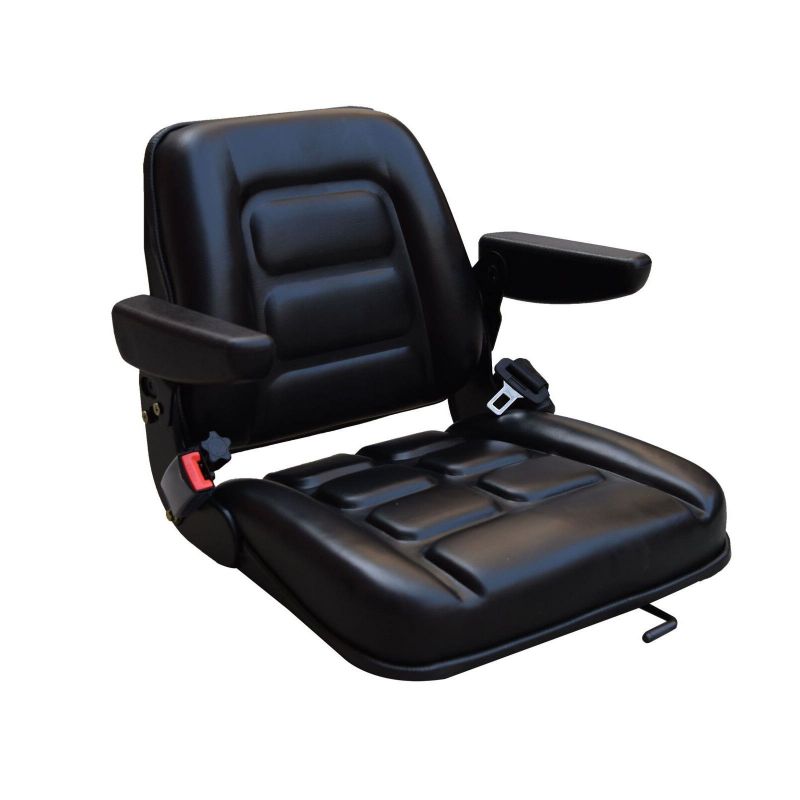
Figure 1: The FD-821-2, an exemplary lawn mower seat replacement designed for durability and operator comfort.
Manufacturer Comparison and Advanced Customization Solutions
Real-World Application Cases and Demonstrable Return on Investment
Ensuring Trustworthiness: FAQ, Delivery, Warranty, and Support
Building and maintaining trust with B2B clients in the specialized field of lawn mower seat replacement is paramount. This extends beyond product quality to encompass transparent communication, reliable logistics, and comprehensive after-sales support. For a product like the FD-821-2 Seat, a clear understanding of Frequently Asked Questions (FAQ), delivery protocols, warranty terms, and accessible customer support channels significantly enhances client confidence and facilitates seamless procurement.
Frequently Asked Questions (FAQ)
-
Q: Is the FD-821-2 Seat compatible with my specific lawn mower/tractor model?
A: The FD-821-2 is designed with a universal mounting bolt pattern (e.g., 8.2" x 11.5" or variable slots) to ensure broad compatibility with a wide range of popular brands and models of zero-turn mowers, lawn tractors, compact utility tractors, and other groundscare equipment. We recommend verifying your existing seat's bolt pattern against the product specifications or contacting our technical support for precise compatibility assessment. For specialized machines requiring a compact tractor seat, dimensional checks are also recommended. -
Q: What is the installation process for the FD-821-2 Seat?
A: Installation is typically straightforward, requiring basic hand tools. The seat is designed for direct bolt-on replacement for many OEM seats. Detailed installation instructions and mounting hardware are included with each unit. For complex installations or models requiring specific adapters, our technical support team is available to provide guidance. The robust design, including features relevant to a high back tractor seat, ensures stable and secure mounting. -
Q: How do I maintain and clean the FD-821-2 Seat?
A: The seat's heavy-duty vinyl cover is designed for easy maintenance. Regular cleaning with mild soap and water is recommended. Avoid harsh chemical cleaners or abrasive materials, which can damage the vinyl. The internal components, such as the suspension, are largely maintenance-free but should be inspected periodically for wear, especially in high-usage environments. Proper cleaning helps prolong the lifespan of your lawn mower seat replacement. -
Q: What safety features does the FD-821-2 include?
A: The FD-821-2 seat is equipped with an integrated operator presence switch (OPS) to comply with safety regulations, ensuring the machine operates only when an operator is seated. It also includes provisions for a seat belt retractor, allowing for the easy installation of 2-point or 3-point seat belts to further enhance operator safety during operation, particularly on uneven terrain.
Delivery Cycle
We understand that timely delivery is critical for commercial operations. Our standard delivery cycle for stock items of the FD-821-2 Seat typically ranges from 3-7 business days for domestic shipments, depending on the destination. For larger bulk orders or customized solutions, lead times may vary but are communicated transparently at the time of order confirmation. We partner with reliable logistics providers to ensure efficient and secure transit. International shipments are managed with comprehensive customs documentation and optimized routes, with estimated delivery times provided based on destination and shipping method. Our robust supply chain management ensures consistent availability and rapid dispatch to minimize your operational downtime.
Quality Warranty and Customer Support
Each FD-821-2 lawn mower seat replacement is backed by a comprehensive 12-month warranty from the date of purchase, covering manufacturing defects and material failures under normal use and service. This warranty reflects our confidence in the meticulous craftsmanship and high-quality materials employed in its production. Our commitment to client satisfaction extends beyond the sale through dedicated customer support channels. Our technical support team is accessible via phone and email, providing expert advice on product selection, installation guidance, and troubleshooting. For complex issues, our engineering team can provide in-depth analysis and solutions. We also offer detailed product manuals, online resources, and an active knowledge base to assist clients. This multi-faceted support system ensures that businesses can maximize the lifespan and performance of their FD-821-2 seats, reinforcing our position as a trusted partner in providing essential equipment components. Our proactive approach to customer service minimizes potential disruptions and reinforces the long-term value of your investment, proving that our commitment to your success is as durable as our products.
Conclusion: Elevating Groundscare Operations with Advanced Seating
References & Further Reading:
- ISO 7096: Earth-moving machinery — Laboratory evaluation of operator seat vibration - International Organization for Standardization.
- ANSI/ASAE S472: Operator Seat Design for Agricultural and Off-Road Equipment - American Society of Agricultural and Biological Engineers.
- Occupational Safety and Health Administration (OSHA) Guidance on Whole Body Vibration - National Center for Biotechnology Information.
- Ergonomics for Tractor Seats: Improving Operator Comfort and Productivity - Ergoweb (Example Industry Blog/Forum).
Post time: Aug . 10, 2025 09:00
NEXT:
This is the last article
